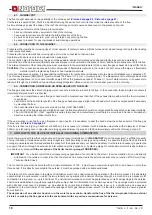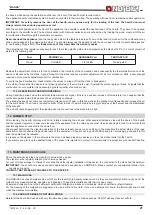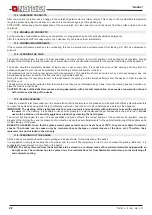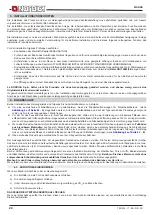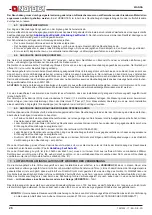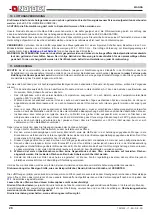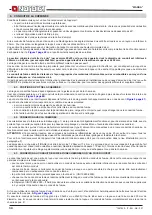
19
8. PERMITTED / FORBIDDEN FUELS
The permitted fuels are wooden logs
. Only dry wooden logs must be used (water content max 20%) .
The wood used as fuel must have a humidity content lower than 20% which is obtained with a drying time of at least one year (soft wood)
or two years (hard wood) placing it in a dry, airy place (for example under roofing). Damp wood makes lighting more difficult, as a greater
quantity of energy is necessary to make the water present evaporate. The humidity content also has the disadvantage, as the temperature
goes down, of causing the water to condense first in the furnace and then in the chimney. Fresh wood contains about 60% H
2
O, therefore
it is not suitable for burning.
Among other things which cannot be burned: carbon residues, cuttings, bark waste and panels, wood which is damp or treated
with varnishes, plastic materials; in this case, the appliance warranty is forfeited
.
Paper and cardboard must only be used for lighting. The combustion of rubbish is forbidden and would also damage the thermo-product
and the flue, causing damage to health and, due to the bad smell, causing complaints from the neighbouring area.
Wood is not a long-lasting fuel and therefore it is not possible to use the thermo-product for continuous heating during the night.
Type
Kg/mc
kWh/kg humidity 20%
Beech
750
4,0
Turkey oak
900
4,2
Elm
640
4,1
Poplar
470
4,1
Larch*
660
4,4
Norway spruce*
450
4,5
Scotch pine*
550
4,4
*
RESINOUS WOOD UNSUITABLE
CAUTION: The continuous and prolonged used of wood which is particularly rich in aromatic oils (e.g. Eucalyptus, Myrtle etc.)
causes the sudden deterioration (flaking) of the cast iron components present in the product.
9. CANALIZATION OF THE WARM AIR
The heat distribution will take place through the ventilation of the installation environment, or of the adjacent room by the connection in the
back of heat resistant ventilation pipes.
Therefore, during installation, it is necessary to establish the type of ventilation or convection to be adopted (
A
-
B
).
Configuration A
- Ventilation
a) Warm air output ONLY from the front side of the appliance:
do NOT
A
).
b) Adjust through the register
C
(
) the warm air output only from the front side of the appliance.
Configuration B
- Ventilation and canalization
a) Warm air output from the front and rear side of the. appliance:
REMOVE
B
)
b) Perform the drilling on the walls to allow the passage and the application of the (fire-resistant) hoses equipped with related openings.
c) Fasten the pipes by means of clamps to the related collars and openings.
d) Each pipe must not exceed 4 m for forced ventilation, and has to be insulated with insulating materials to avoid noise and loss of
heat.
e) The openings have to be positioned at a height not lower than 2 m from the floor to avoid that hot air at output meets people; Please
respect the distance of the convection openings according to the local construction norms.
f) The lengths of the canalization pipes must have the same length to avoid the distribution of differing quantities of air from each
output. (see
B
)














